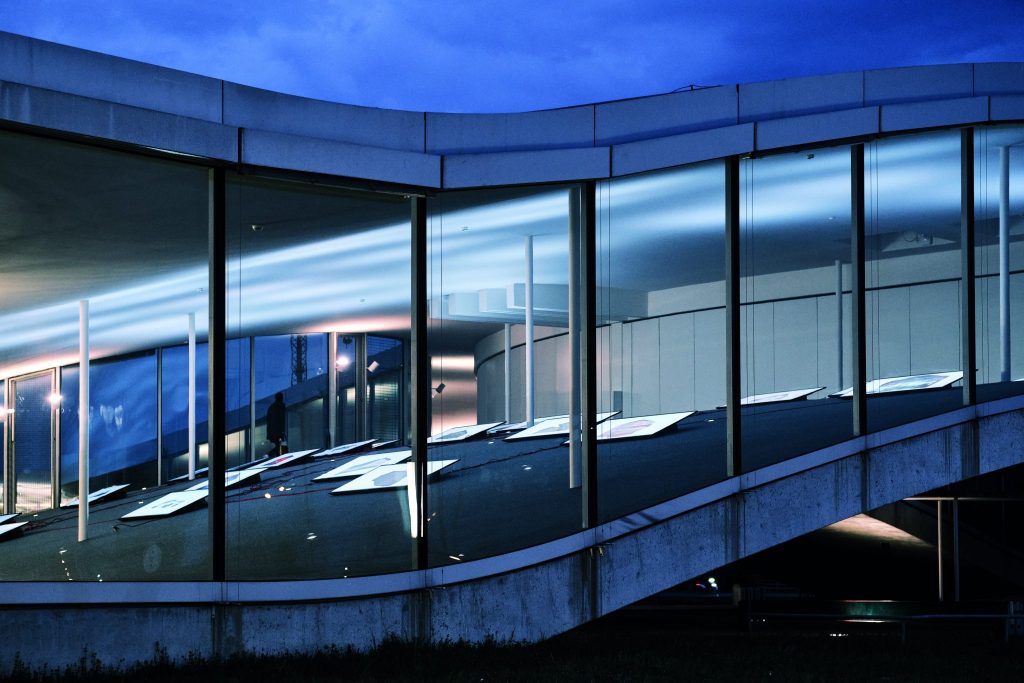
Imagined as an ever-shifting spatial interface revealing the innermost dreams of an artificial machine pre-occupied by possible resilient futures of the Swiss refuge, “Design Brain” is a showcase of the outcome in the design research studio conducted at EPFL with master students in Spring 2020 called Refuge 2.0 – Artificial Swissness. In the studio, machine learning algorithms, specifically GANs, generative adversarial neural networks, were used as a way to distill the essence of architectural DNA from 4000+ images of Swiss Alpine architectures through its pictorial representation. As these remote habitations in alpine regions make use of local materials and are adapted to culture and climate, the notion of “cultural, ecological and environmental resilience” was examined and questioned the role of creative artificial intelligence and deep learning in architecture.
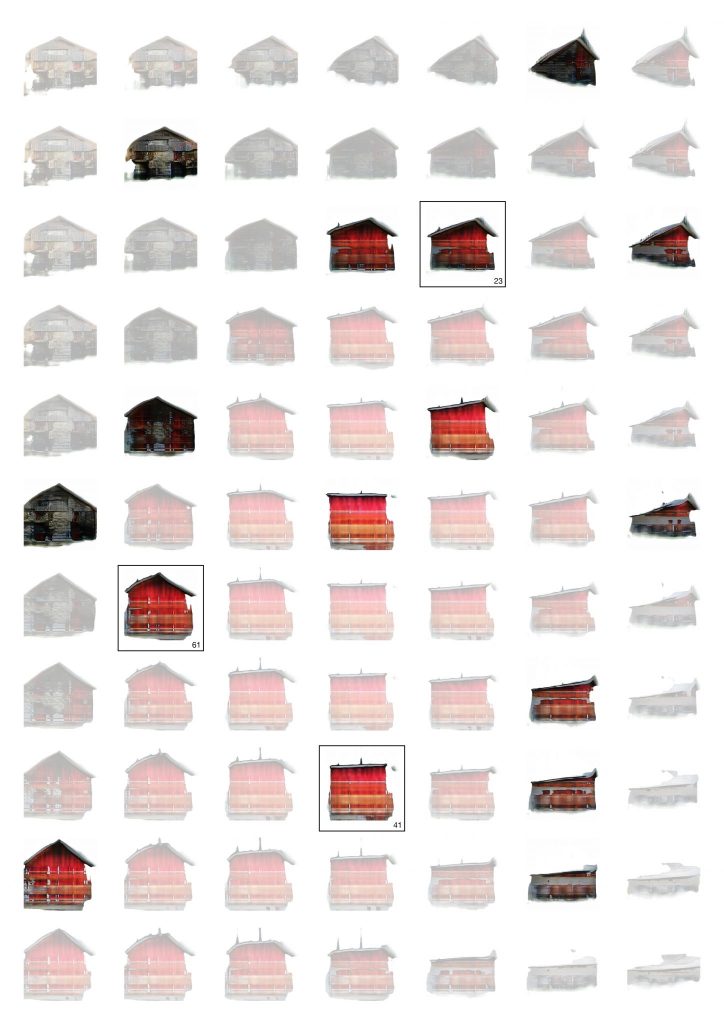
GANs have been proven to have an unprecedented capacity to generate instances by learning the statistical pattern in the given data. A high-dimensional, mathematical defined landscape, so called ‘latent space’, was created during the machine learning process, in which the semantic features of architecture were inferred, recombined, remapped as a probability distribution in the neural networks. The results are the virtually infinite possible combinations of learned architectures, entangled in the high-dimensional latent space. We can navigate and project this high dimensional latent space into our existential world, but we will never be able to fully understand and visualize its true existence. The interpolation of latent space coordinates is a way to navigate this enormous space, allowing us to wander the statistical landscape that had been created within and exploring the innermost machine dream of multidimensional Swiss Refuge.
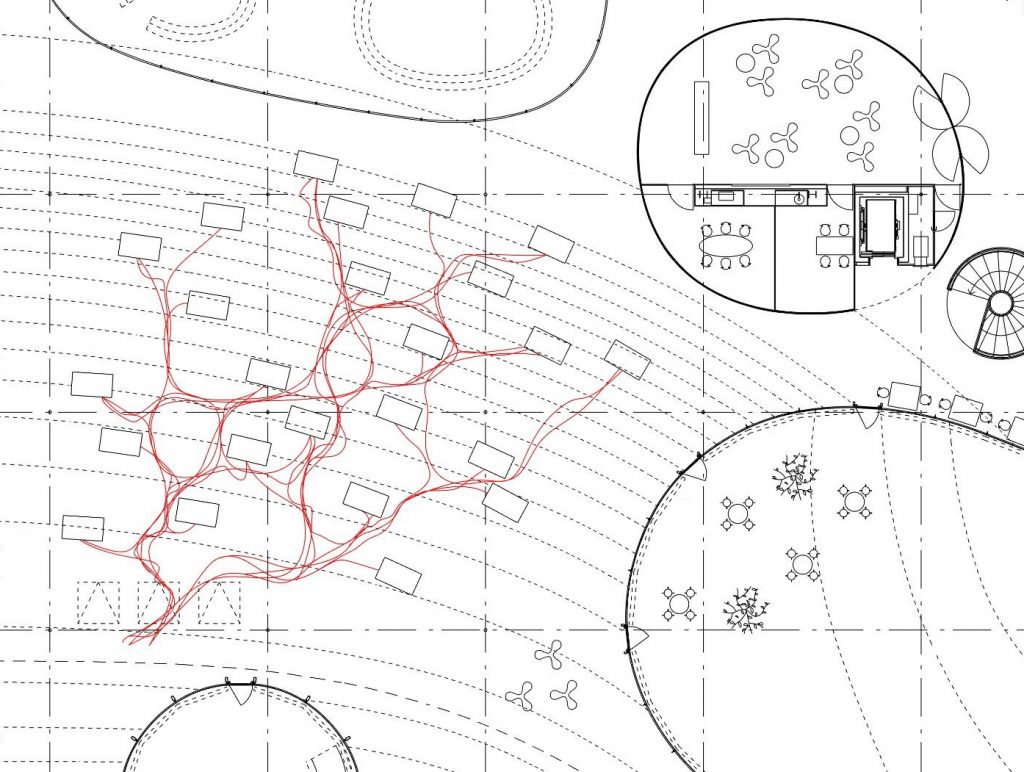
The installation consists of multiple horizontally positioned displays of animated Swiss refuges deployed as a field condition in the space created in-between the two undulating surfaces, the floor and the roof of Rolex Learning Center at EPFL to allow people experiencing this walk in the machine latent space. Imagined as a mountain that continues from the French pre-alps across the lake Geneva, the building surface becomes the active zone as a large, hyperactive, artificial brain that invites people wonder, and absorbs them in palimpsest of architectural imagery of Swiss alpine architecture.
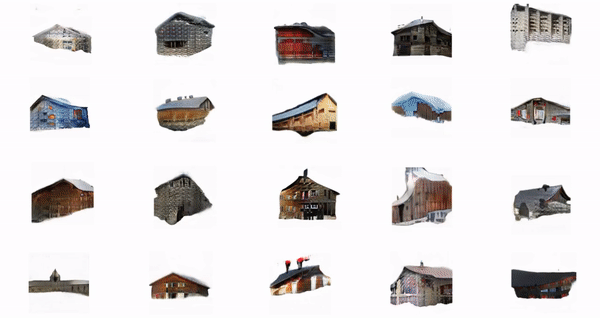
The multiple layers of displays composed of 22 high-resolution, high-luminosity digital screens show how the latent interpolation of machine generated architectures from multiple layers of networked displays, continuously engaging the audience emotionally (viscerally) and intellectually (cerebrally). The screens reveal the deep dreaming of machines about Swiss architectural imageries, capturing instances of Alpine architectural culture from the GANs’ high-dimensional latent spaces. The spatialization of the artificial brain allows the audience to get a sense of the visual cortex of deep convolutional neural networks, as virtually infinite numbers of architectural images of cultural resilience are generated by the machines. The consciously arranged cables powering the exhibition (linearity and bundling) further contribute to the eerie mechanical aesthetic of the exhibition. Technically, as an integral part of the exhibition design, the red power cables represent the convolutional nature of the neural network of the machine brain.
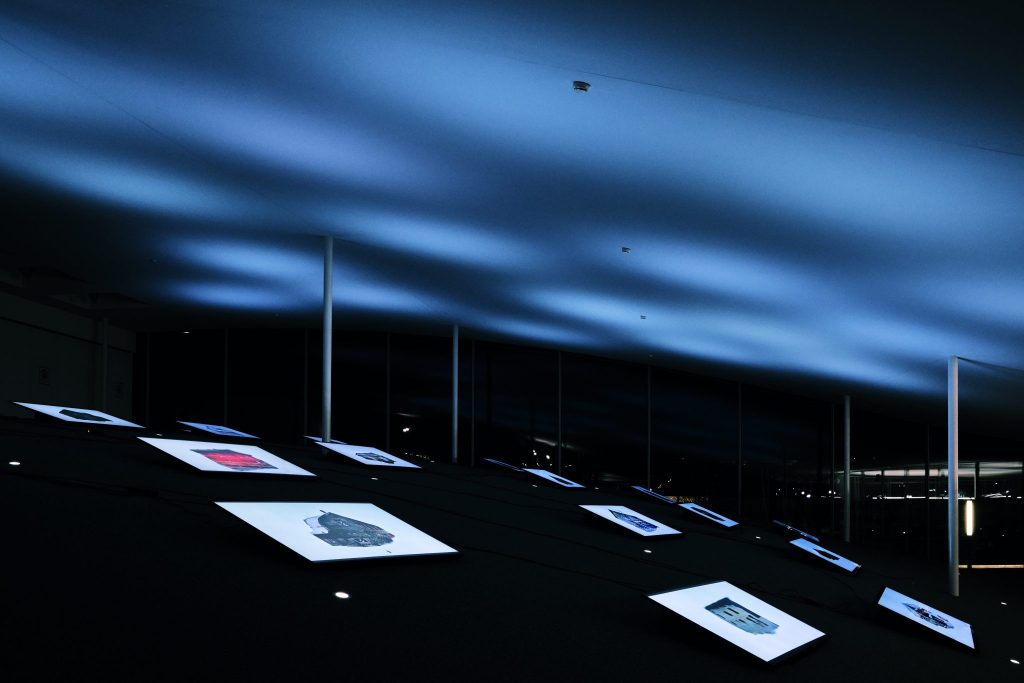
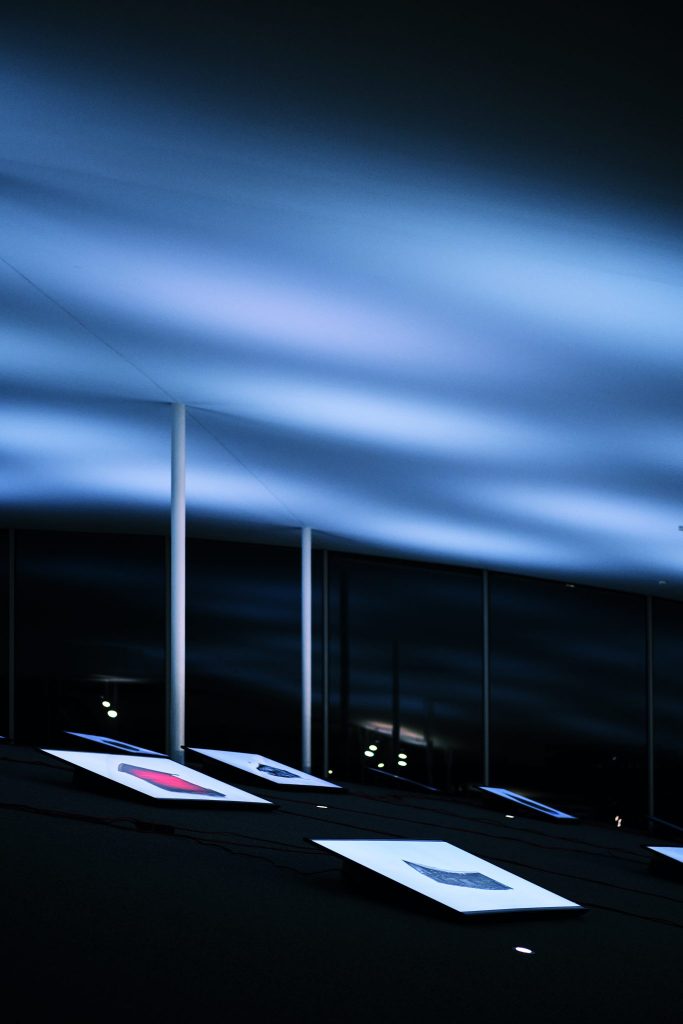
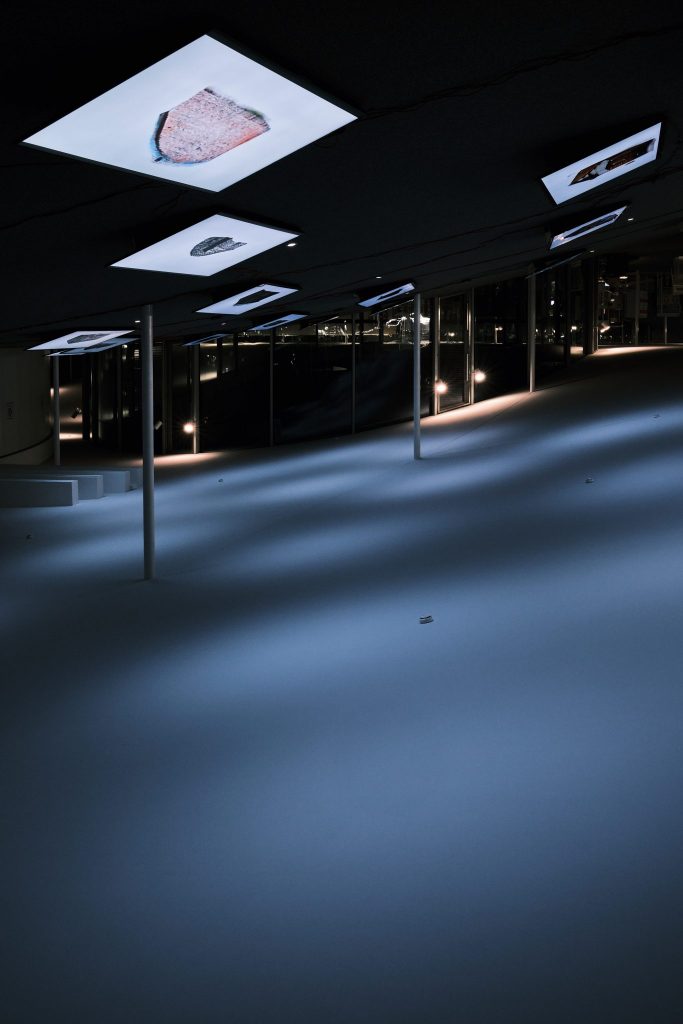
Keywords: machine learning, architectural design, generative adversarial networks, latent space
Location: Rolex Learning Center, EPFL, Lausanne, Switzerland
Master project students: Samuel Aeschimann, Enzo Arioli, Aina Rodríguez Bofill, Romain Claus, Philippe Audemard d’Alançon, Núria Fàbrega, Leslie Faisan, Basil Ferrand, Christophe Gautier, Thomas Gobet, Mathieu Iffland, Simone Izzo, Yasmine El Karamoudi, Clara de Lapuerta, Tamara Lobo, Nicolas Mahren, Benoît Meugniot, Eric Nardini, Kimberlyne Nguyen, Lucía Quintela, Salla Sivunen, Ruojun Zhao
Installation Team: Enzo Arioli, Estefania Mompean Botias, Romain Claus, Christina Doumpioti, Christophe Gautier, Thomas Gobet, Juan Gomez, Georg-Christoph Holz, Mikhael Johanes, Frederick Chando Kim, Gianna Morgane Ledermann, Eric Nardini, Kimberlyne Nguyen
Professor: Jeffrey Huang
Image credits: Julien Heil, MxD